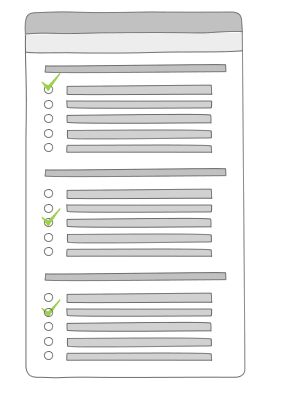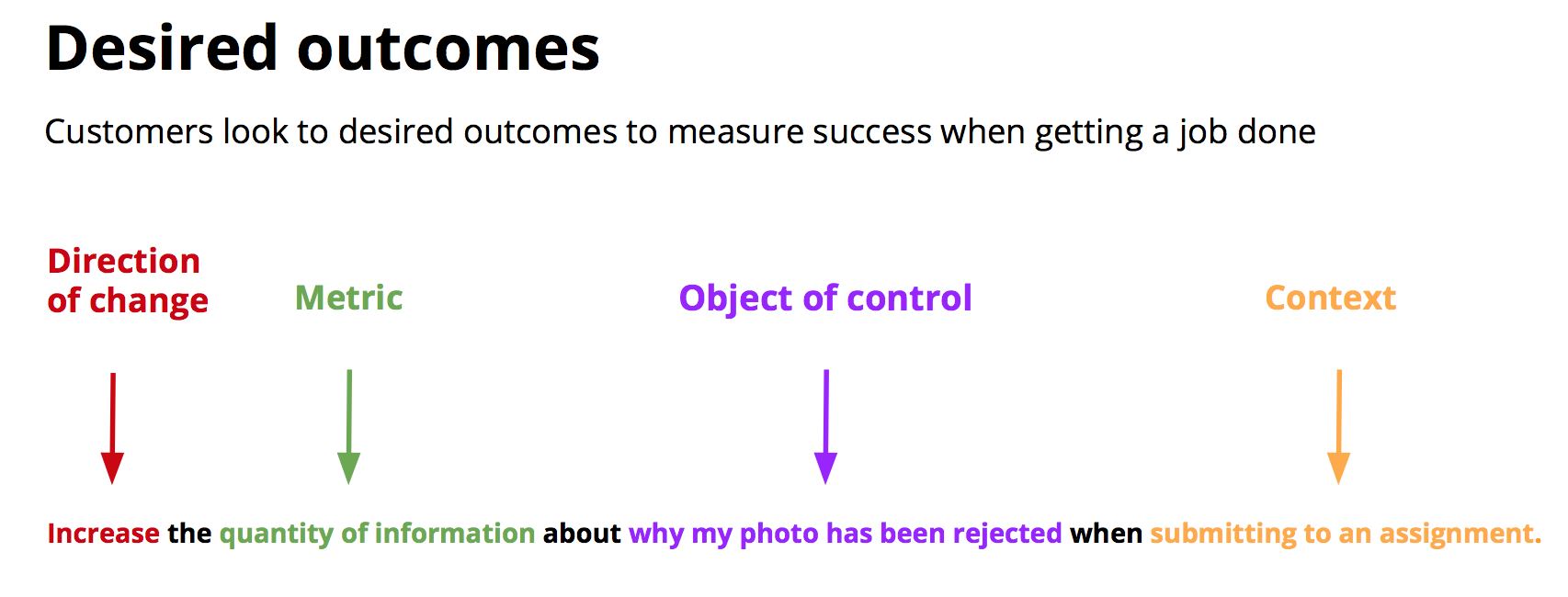
Your Shot started in 2006. Back then, readers could submit one photo a month to try and get published in the magazine. In May of 2013, Your Shot relaunched with real community functionality. The relaunch enabled people to create profiles, add comments and leave feedback. It also enabled the Your Shot editorial team to create assignments and curate stories from them with the help of National Geographic photojournalists serving as guest editors.
EB Collective hired me to implement a Jobs to be Done research program as part of a complete redesign of National Geographic Your Shot platform. The aim of the research was to better understand Your Shot customer needs, and to find opportunities to improve the platform.
Jobs to be Done is a theory created by Clayton Christensen, professor at the Harvard Business School, and Tony Ulwick of Strategyn. Tony created a framework that puts the theory into practice - Outcome driven innovation (ODI).
We followed the Jobs to be Done framework to uncover what "jobs" people want to get done when they hire Your Shot. With this information we would be able to create an innovation strategy to adjust the existing product features to user needs, or create new features to satisfy unmet needs.

Clayton Christensen, professor at Harvard Business School
The goal was to discover meaningful segments with unmet needs. Knowing which needs are unmet - which desired outcomes are underserved - will enable Your Shot to create a unique and valuable position. To create such value proposition Your Shot must:
• know where in the job the customer is under-served
• create the value proposition that communicates to customers that their needs can be satisfied
• satisfy the unmet needs better than its competitors.
1. This research was guided by the Jobs-to-be-done framework to capture and define the customer inputs. We used those inputs to define customer needs. We then analyzed those customer needs and uncovered opportunities for growth with qualitative and market segmentation methods.

Steps in the process:
• Desk research of previous research
• Behavioral segmentation
• In-depth interviews
• Jobs maps
• Interview analysis
• Define needs statements & desired outcomes
• Outcome survey
• Opportunity Mapping
We learned about Your Shot members from previous research such as surveys, online diaries, website analytics and defined 8 core jobs that we used to guide the interviews.

8 core jobs:
• Build my reputation
• Belong to a community
• Experience photo stories
• Receive feedback on my photos
• Learn new photography skills
• Motivate myself to take photos
• Publish my work
• Share my stories
We used these jobs and built interview guides for each job. We asked the participants to rank the jobs in terms of importance and interview each member around the one job they chose as the most important in their careers as photographers.

We recruited interviewees from a diversity of Your Shot user base:
• Frequency of use:
Disengaged (low frequency of use)
Engaged (high frequency of use)
• Contribution level:
Power contributors (Upload many photos, often)
Infrequent contributors (Upload many photos, at low frequency)
Supporters (Upload few photos, but favorite a lot)
• Duration of membership:
Veterans (Membership > 3 years & frequent users)
New members (Just sign up less than 3 months)
Deactivated members (within the last 3 months)
We interviewed 16 participants across the different spectrum of behaviors. We focused the interview in the job they ranked as most important to try to uncover the steps they go through to get the job done. From the interviews we understood not why interviewees use Your Shot but how Your Shot fits into what they are trying to accomplish. What job are they ultimately trying to get done.

We coded and analysed each interview to define the steps of the job and define desired outcomes (metric that customers use to measure success when getting a job done).

We created a job map for each job so we could identify what customers are trying to get done at every step, not what they are currently doing. A good job map represents the ideal process flow for that job.

When customers are executing a job they have a set of metrics in mind that define the successful execution of that job. These metrics are the desired outcomes. This set of functional metrics will help figure out how to get the job done faster, more predictable, and more efficiently.
We captured 256 desired outcomes for all of the jobs. We merge similar outcomes and eliminated some weak statements and decided to focus on 58 desired outcomes.

We rewrote the desired outcome statements in a job statement form and prepare the survey. We administered and sent the survey to Your Shot member and other professional photographers outside the Your Shot community. We got 100 responses. We gave each participant a $50 amazon gift card.


This opportunity map reveals customers desired outcomes in three categories: Underserved,appropriately served and one that is overserved. This map informs product strategy by enabling decision makers to focus on the best opportunities for growth.
A customer need is underserved when it is important to the customer, but not well satisfied by the solutions currently available.

National Geographic used the research findings and insights from the Jobs to be Done research to make critical product management and design decisions, focusing the team on unmet customer needs.

JSK -Stanford
Research & UX Design
Radio Ambulante
Research & UX Design